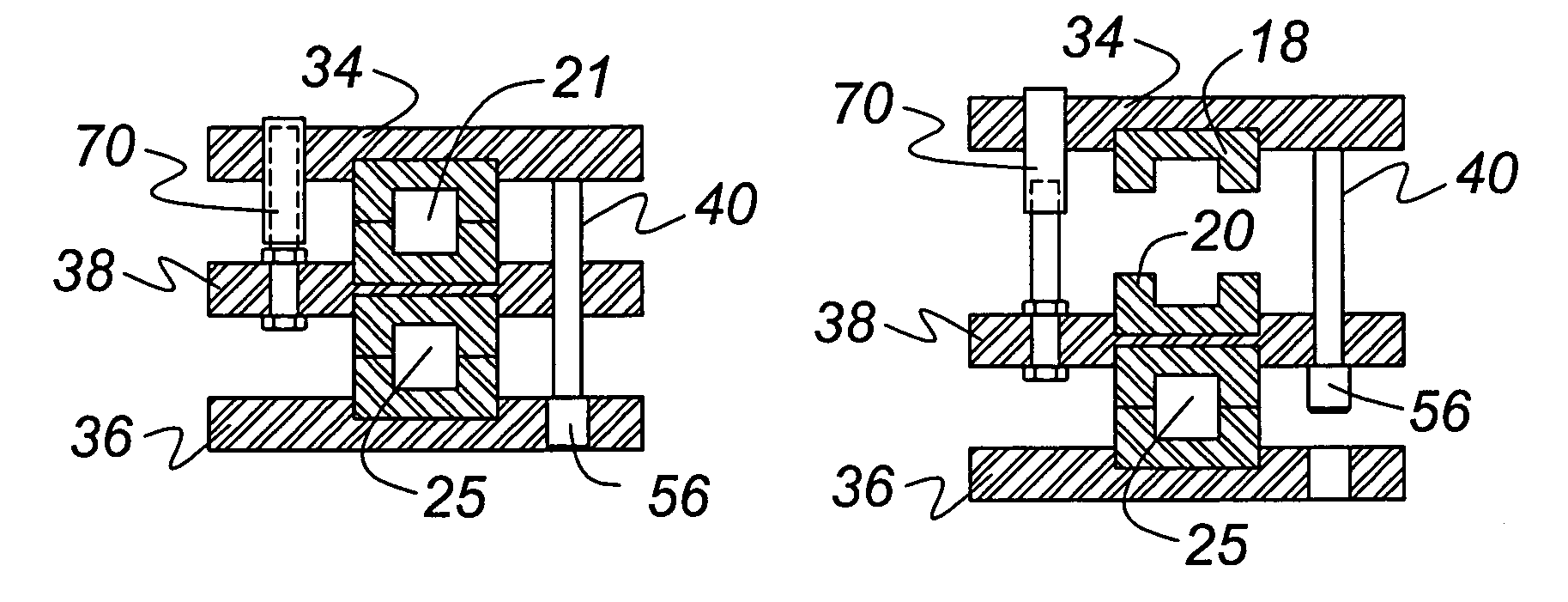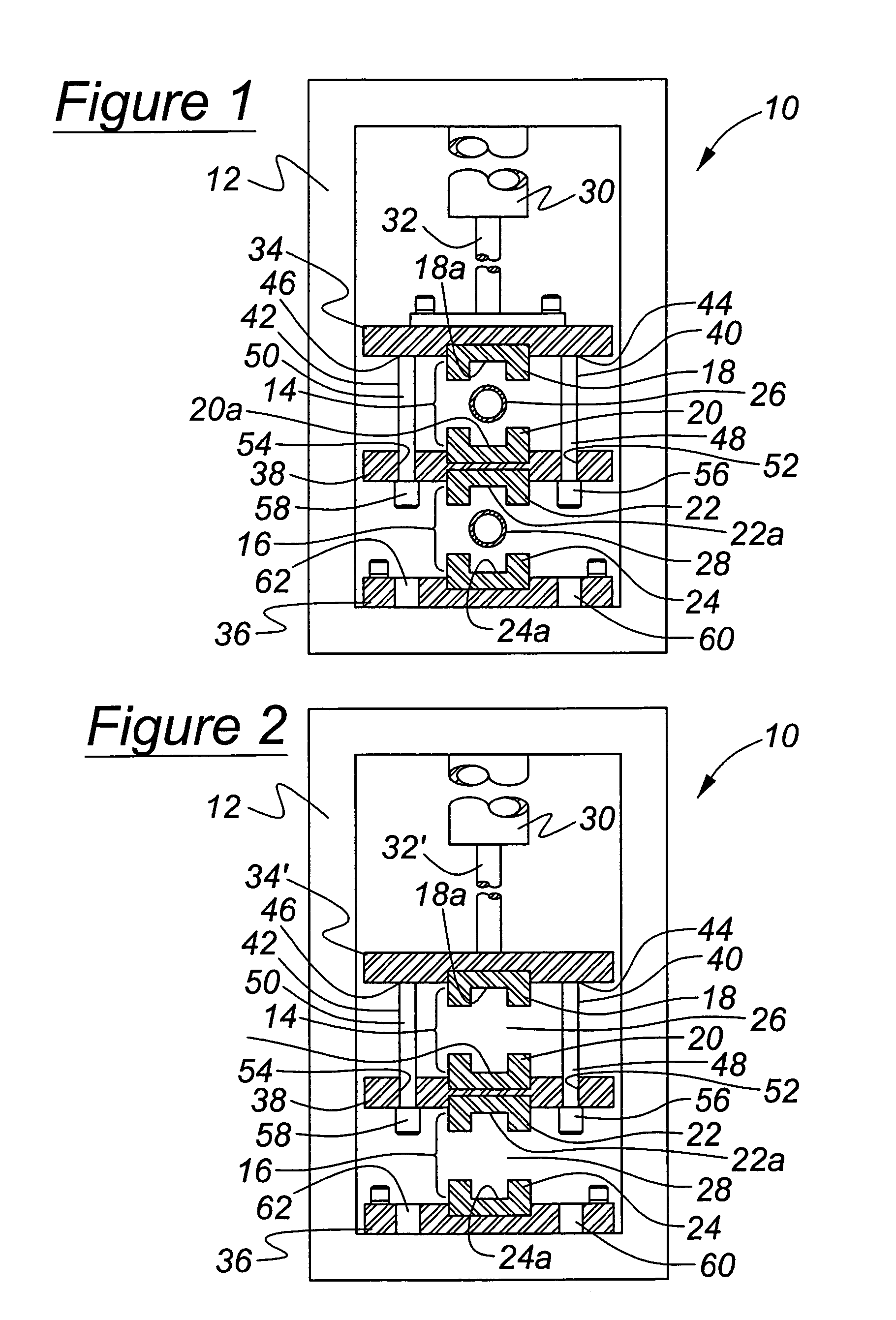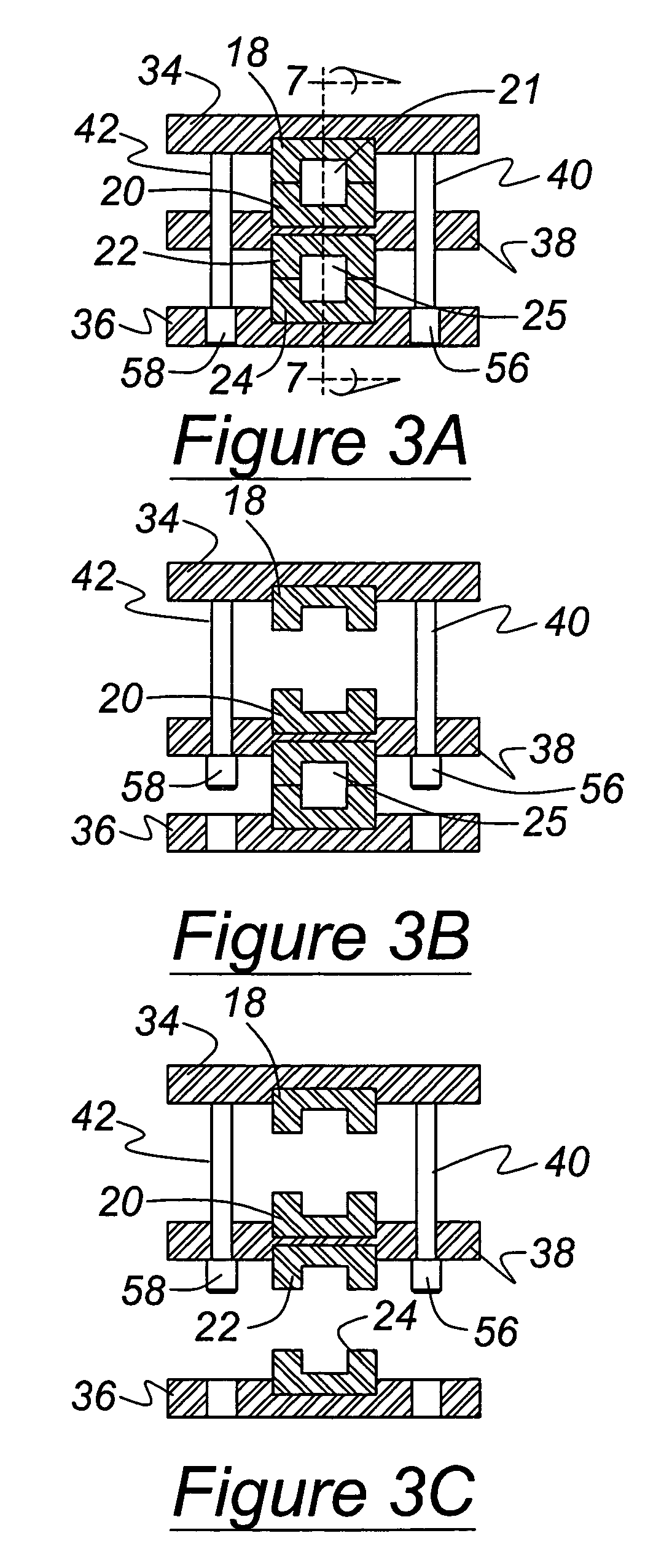Apparatus and method for opening and closing stacked hydroforming dies
- Summary
- Abstract
- Description
- Claims
- Application Information
AI Technical Summary
Benefits of technology
Problems solved by technology
Method used
Image
Examples
Embodiment Construction
[0019]Referring now to the drawings, there is illustrated in FIG. 1 an apparatus, indicated generally at 10, for performing a hydroforming process in accordance with this invention. The apparatus 10 includes a frame 12 that is sized to support hydroforming dies arranged in a vertically oriented relationship, two of which are indicated generally at 14, 16. Although this invention will be described and illustrated in the context of the two vertically stacked hydroforming dies 14 and 16, it will be appreciated that this invention can be practiced with a greater number of such hydroforming dies if desired. Furthermore, the hydroforming dies can be arranged within the hydroforming apparatus 10 in any desired direction other than the illustrated vertical direction. For example, the dies may be stacked horizontally, in which case the lateral plane of the dies is vertical, and the direction of their movement is horizontal.
[0020]The first die 14 includes a first pair of cooperating die secti...
PUM
 Login to View More
Login to View More Abstract
Description
Claims
Application Information
 Login to View More
Login to View More - R&D
- Intellectual Property
- Life Sciences
- Materials
- Tech Scout
- Unparalleled Data Quality
- Higher Quality Content
- 60% Fewer Hallucinations
Browse by: Latest US Patents, China's latest patents, Technical Efficacy Thesaurus, Application Domain, Technology Topic, Popular Technical Reports.
© 2025 PatSnap. All rights reserved.Legal|Privacy policy|Modern Slavery Act Transparency Statement|Sitemap|About US| Contact US: help@patsnap.com



